What is a ball bearing used for?
Learn about the importance of ball bearings in today's industry.
This comprehensive guide will discuss the uses, types, and benefits of ball bearings to help you decide on what type of ball bearing to use for your needs.
Ball bearings are the unsung heroes of modern machinery.
Without them, many everyday devices would be powerless and motionless.
Ball bearings are small round metal parts that allow two circular objects to move smoothly against each other with reduced friction.
Think of a ball bearing like a tiny basketball court with two players: one stationary and one spinning around it.
In this analogy, the stationary part is called the "inner race" while the spinning one is known as the "outer race."
The basketballs are tiny steel balls that move within the races and provide a cushion between them.
With these parts, ball bearings can reduce friction and allow for the smooth motion of objects.
If it weren't for these tiny helpers, many of our appliances and machines wouldn't work as well.
A ball bearing is a type of rolling-element bearing that uses balls to maintain the separation between the moving parts of the bearing.
Ball bearings are used in a wide variety of applications, from automotive engines and transmissions to computer hard drives and power tools.
Ball bearings reduce friction, enabling faster speeds and smoother operation in devices with rotating or oscillating components.
They are also used in a wide range of industrial applications, such as conveyor systems, elevators, and other machinery.
The next section covers the basic functions of a ball bearing, how and where it's used, the types of ball bearings, and the advantages of using them.
Definition of a ball bearing
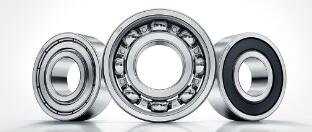
A ball bearing is a type of rolling-element bearing that uses balls to maintain the separation between the moving parts of the bearing.
The purpose of a ball bearing is to reduce rotational friction and support radial and axial loads.
It achieves this by using at least two races to contain the balls and transmit the loads through the balls.
In most applications, one race is stationary and the other is attached to the rotating assembly.
As one of the bearing races rotates it causes the balls to rotate as well.
Because the balls are rolling, they have a much lower coefficient of friction than if two flat surfaces were sliding against each other.
A brief overview of its function and purpose
A ball bearing is a rolling-element bearing that uses balls to maintain the separation between the moving parts of the bearing.
The purpose of a ball bearing is to reduce rotational friction and support radial loads.
It achieves this by using at least two races to contain the balls and transmit the load through the balls.
In most applications, one race is stationary and the other is attached to the rotating assembly.
As one of the bearing races rotates it causes the balls to rotate as well.
Because the balls are rolling they have a much lower coefficient of friction than if two flat surfaces were sliding against each other.
Ball bearings are used in applications such as hard drives, gearboxes, and engines, among many others.
Types of ball bearings
Single-row ball bearings
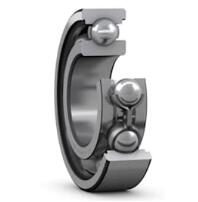
Single-row ball bearings are commonly used in applications requiring low friction and minimal noise.
These bearings come with either an open or sealed design, depending on the environment they will be operating.
Open single-row ball bearings allow for a greater degree of lubrication to reduce friction and wear, whereas sealed designs provide improved protection from dirt and moisture.
Single-row ball bearings are designed to provide high precision and low noise operation, allowing them to be used in a range of applications including automotive, agricultural, and medical applications.
They are also easy to maintain and can be used in a variety of complex applications.
Double-row ball bearings
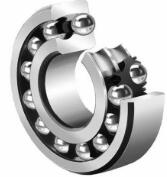
Double-row ball bearings are a type of bearing used to support radial and axial loads.
These bearings consist of two rows of round steel balls held together by an inner and outer ring.
The balls roll along the grooved tracks on the rings, allowing the bearing to rotate with minimal friction.
Double-row ball bearings offer higher load-carrying capacity than single-row bearings and are typically used in applications where radial and axial loads must be supported at the same time.
They can also be used in applications where vibration levels are high, as the inner and outer rings absorb the vibrations more effectively than a single-row bearing would.
Angular contact ball bearings
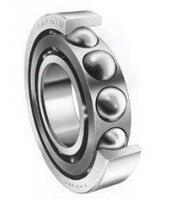
Angular contact ball bearings are a type of rolling-element bearing that uses angular contact to reduce friction and provide additional support for radial loads.
They can accommodate both axial and radial forces, making them suitable for high-speed applications such as electric motors and pumps.
Angular contact ball bearings have higher capacity than deep groove ball bearings, allowing them to handle higher loads and speeds.
They are also used in applications where the misalignment of shafts is a concern, as the angular contact provides additional support.
Angular contact ball bearings can be used in a variety of applications, from automotive and aerospace to medical equipment and industrial machinery.
Self-aligning ball bearings
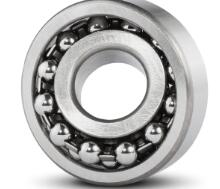
Self-aligning ball bearings are a type of bearing designed to reduce misalignment in industrial equipment.
They are equipped with two rows of balls, inner rings, and outer rings which contain concave raceways that allow the bearing to move along an axis.
The spherical shape of the balls provides a self-adjusting feature so the bearings can adjust to small misalignments of the shaft.
Self-aligning ball bearings are also designed with deep grooves in the inner and outer rings, which helps to provide superior axial and radial load capacity.
The bearing also offers good low-friction performance and is well-suited for applications with high dynamic loads.
The low friction of self-aligning ball bearings provides for energy-efficient operation and helps to reduce operating costs.
Thrust ball bearings
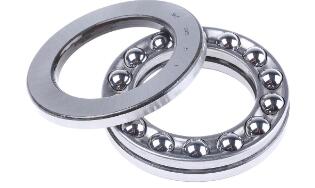
Thrust ball bearings are ideal for applications such as automobiles, aircraft, ships, and heavy machinery.
They consist of two equally-spaced grooves in the outer ring, into which hardened and ground balls can rotate.
The inner ring is typically made from steel or brass. Thrust ball bearings also have a high load-carrying capacity and are capable of withstanding heavy thrust loads in one direction.
They are usually able to operate at higher speeds than other types of bearings due to the greater number of balls used, and they also have lower friction compared to other bearing types.
Furthermore, they require less maintenance than roller bearings or cylindrical bearings.
Applications of ball bearings
Automobiles
Ball bearings are essential components in automobiles. They are used to reduce friction between moving parts, enabling smoother and more efficient operation of engines and car systems.
Ball bearings also help to distribute the load evenly throughout the car, minimizing wear and tear on components while improving overall performance.
As a result of their versatility, ball bearings can be found in virtually all car systems, from the engine and transmission to brakes, steering, and suspension.
Ball bearings are particularly important for engines as they provide smooth rotation of crankshafts and other rotating components.
The use of ball bearings in automobiles has made many improvements in performance, fuel efficiency, and overall longevity of cars.
Industrial machinery
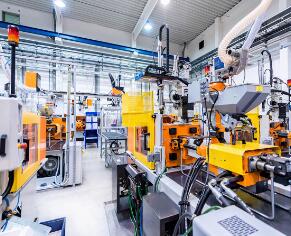
Ball bearings are an integral part of industrial machinery. They are used in a variety of applications, such as transmissions, driveshafts, and motors.
Ball bearings reduce friction and allow for the smooth operation of machines.
This helps to ensure that machines operate efficiently and reliably over long periods.
They also help to reduce noise levels by minimizing the vibrations created when parts spin or rotate.
By using ball bearings in industrial machinery, manufacturers can ensure that their products will perform optimally and last longer than if they do not use ball bearings.
Therefore, ball bearings are a crucial component of any industrial machinery.
Aerospace
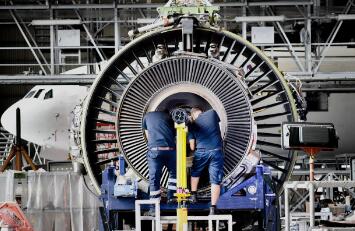
Ball bearings are used in the aerospace industry for a variety of purposes, including enabling aircraft to fly more efficiently.
Ball bearings facilitate smoother operation and reduced wear of rotating parts by reducing friction between moving components.
They can also be used to reduce maintenance costs because they are durable and require minimal upkeep.
Additionally, ball bearings provide support for shafts that are subjected to high forces and help absorb shock, helping to ensure the reliability of aircraft and reduce the risk of malfunction or breakdown.
Sports equipment

Ball bearings are an integral component in many sports equipment, such as skateboards, bikes, and rollerblades.
In these applications, the ball bearings reduce friction and enable a smoother ride.
They also provide strength and durability to a variety of sporting goods.
Additionally, they are used in bicycles, scooters, and more to ensure riders enjoy a comfortable journey.
Moreover, ball bearings are used in the construction of golf clubs to ensure the club heads move freely, enabling maximum flexibility and accuracy.
Ball bearings also play an important role in tennis racquets, as they reduce the amount of vibration felt when a ball is struck.
Home appliances
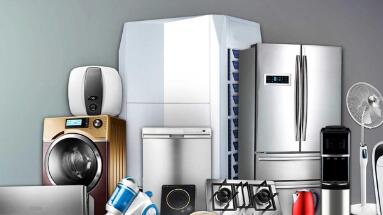
Ball bearings are commonly used in many home appliances, such as washing machines and clothes dryers.
The bearing helps to keep the moving parts of the appliance in place and reduces friction between them.
This allows for smoother operation and quieter running, prolonging the life of the machine.
Ball bearings are also used on fan motors to improve their efficiency, as well as to help reduce the amount of vibration the motor produces.
Advantages of using ball bearings
Low friction
Ball bearings enable smooth and efficient operation with low friction.
This makes them ideal for applications such as automotive transmissions, electric motors, pumps, fans, compressors, and other machinery that require frequent movement.
They are also used in high-performance machines such as racing bicycles and fitness equipment.
The low friction provided by ball bearings also helps to reduce energy consumption, allowing for more efficient and economical operations.
Ball bearings help to extend the life of machinery due to their resistance to wear and tear, making them a popular choice for many industries.
Their durability and reliability mean that they can be used in a variety of settings, from low-speed equipment to high-speed machinery.
Ultimately, ball bearings are a cost-effective way to ensure smooth and efficient operations with minimal friction.
High load-carrying capacity
Ball bearings are capable of carrying and sustaining very heavy loads. This makes them ideal for engineering applications that require the bearing to undergo significant stress, such as in automotive engines or large industrial machinery.
The design of ball bearings also allows them to operate with minimal friction and noise, making them useful for precision machines.
Ball bearings can also be used in applications that require fast speed and high accuracy, such as in robotics and medical devices.
High-speed capability
Ball bearings are beneficial to many industries and applications due to their ability to operate at high speeds.
This is especially useful for components that require a fast rotational speed, such as axles, motors, and turbines.
The design of the ball bearing allows it to reduce friction between two surfaces, thus allowing the component to spin more quickly and with greater efficiency.
Additionally, ball bearings are durable and low maintenance due to their strong construction, making them a cost-effective solution for many industries.
Low maintenance
Ball bearings are widely used in industrial and commercial applications due to their low maintenance requirements.
They require little oil or grease for lubrication and rarely need repairs or replacements, making them an economical choice for many operations.
Furthermore, the use of ball bearings helps reduce friction and wear on other components, making them more efficient and increasing their lifespan.
Long lifespan
Ball bearings are highly durable and have a long lifespan, making them an ideal choice for numerous applications.
They also function with minimal noise and vibration, making them suitable for both industrial and consumer use.
Further advantages of ball bearings include low friction, uniform speed rotation, and high load capacity compared to other bearing types.
As such, they can be used for a variety of applications, including automotive and aerospace engineering, medical equipment manufacturing, and consumer electronics.
Conclusion
In conclusion, ball bearings have a wide range of uses in the modern world. From cars to computers, these small components are integral for smooth and efficient operation.
As technology continues to evolve and become more complex, the importance of ball bearings can only be expected to increase.
It is clear that ball bearings have the potential to make a major impact on our everyday lives and should not be underestimated.





